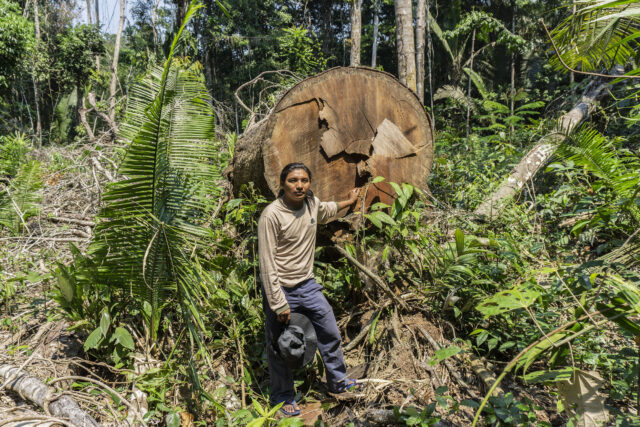
Amazon rainforest
The Amazon rainforest helps regulate the climate and is home to millions of people and a huge percentage of the world’s remaining biodiversity. Despite its importance, the Amazon is under serious threat from deforestation, mainly to make space for industrial agriculture.
How big is the Amazon rainforest?
The Amazon rainforest is the largest rainforest on Earth, at 5.5 million square kilometres. It covers nearly all of the Amazon River basin in South America.
The Amazon is home to over 40,000 plant species, of which 16,000 are different types of trees. It is thought that there are nearly 400 billion trees across the Amazon rainforest. Amazon rainforest trees absorb carbon and are even able to create their own rain, sustaining rainforest biodiversity.
The biodiversity of plant species in the Amazon is the highest on Earth, with one in ten known species in the world found there.
Where is the Amazon rainforest located?
The rainforest includes land belonging to nine South American countries. Brazil has the most by a long way, with nearly 60% of the rainforest within its borders. Peru and Colombia have 13% and 10% of the rainforest respectively.
How many people live in the Amazon rainforest
The Amazon is home to over 30 million people, around 2.7 million of whom are Indigenous people.
Rather than being an unpopulated wilderness as was previously assumed, archaeologists now believe that human inhabitants first lived in the Amazon 11,000 years ago, shaping the land through forest gardening and Indigenous soil fertility management.
Some estimates suggest that before Europeans colonised South America in the 1500s, there was a population of around 5 million Indigenous People in the Amazon region. Diseases from Europe such as smallpox drove the population down to under 1 million in the 1900s, and under 200,000 by the early 1980s.
What animals live in the Amazon rainforest?
The Amazon rainforest is home to one-tenth of the animal species in the world, according to some scientists.
Jaguars, sloths, caimans, howler monkeys, capybaras, pink river dolphins, macaws, anacondas, piranhas, electric eels and poison dart frogs are some of the more unusual animals that live in the Amazon rainforest.
The region is also home to around 2.5 million different species of insects, one in five of the world’s bird species, and one in five of the world’s fish species.
Why is the Amazon so important?
The Amazon rainforest is important to the rest of the planet because it helps to regulate the world’s climate. The Amazon rainforest stores 90–140 billion metric tonnes of carbon, making it the world’s largest land carbon ‘sink’.
As climate change is caused by excess carbon emissions from industry, these carbon stores or ‘sinks’ help keep the climate stable. When trees are cleared or burned, the rainforest loses its ability to store carbon.
Deforestation releases carbon as trees are left to rot, or are burned – both of which releases more carbon into the atmosphere, making climate change worse.
The causes of deforestation in the Amazon
Cattle ranching for industrial meat and dairy is the leading cause of Amazon deforestation. Fire is a common method of deforestation in the Amazon – cattle ranchers start fires to clear the land to make way for farming.
Climate change is making the dry season hotter and drier, enabling Amazon fires to spread more rapidly. As well as removing important carbon stores, the fires themselves release even more carbon into the atmosphere, further worsening climate change.
Around 17–20% of the Amazon rainforest has already been destroyed, with almost all of the deforested areas being turned into cattle ranches. One estimate suggests that over 900,000 square kilometres has been turned into pasture since the 1960s.
Deforestation by fire is increasing in the Amazon, even being encouraged by the Brazilian government for national ‘development’.
Scientists warn that if even only 5–8% more of the Amazon is lost to deforestation, it could reach a tipping point, meaning the rainforest will not be able to produce enough rain to sustain itself. This would have a disastrous impact on the whole world’s climate.
The nearby Cerrado in central Brazil is also being destroyed for industrial meat through the expansion of soya farms. Most of this soya is used to feed farm animals around the world.
Logging, mining and dam-building are also responsible for Amazon deforestation, but cattle rearing for meat and dairy products is estimated to account for at least 80% of the destruction.



